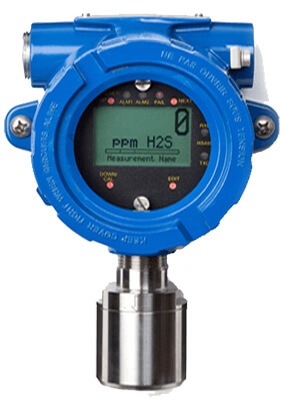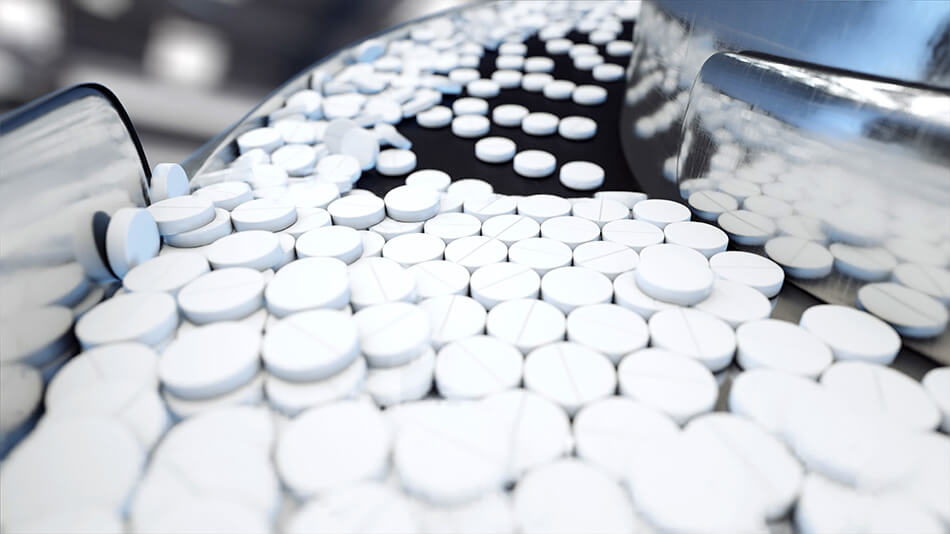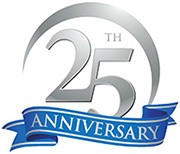Gas Monitors Improve Safety in Pharmaceutical Manufacturing
- By : PureAire Monitoring Systems
- Posted on : May 05, 2021
- News Room
The manufacture of pharmaceutical products is a complex and multi-stage operation that can include processes such as blending, wet and dry granulation, milling, hot-melt extrusion, coating, and tablet pressing. Producing the exact formulation, release rate, consistency, and dosage form requires many chemical compounds and substances.
Among the mare active pharmaceutical ingredients (API), the primary and biologically active medicinal component of the drug; excipients, the non-active components, including lipids, which serve as carriers, solubilizers, or emulsifiers of the active ingredients; and plastics or polymers used in production to create the dispensing form of the finished pharmaceutical product.
Lipids and Polymers
Lipids and polymers are vitally important to the drug production process. They are used for the fabrication of most dosage forms, release rate modifiers, enhanced drug absorption, stabilizers, solubilizers, and more.
Lipids, which are soluble in organic solvents such as ethanol, isopropyl alcohol, acetone, and benzene, are purified and refined to be used as fillers, binders, lubricants, solubilizers, emulsifiers, and emollients in a variety of delivery forms, including tablets, capsules, suppositories, emulsions, ointments, creams, and lotions.
Polymers are used in a wide variety of applications that can include everything from film coatings on medicines to controlling the release rate of drug formulations. They are also used as a taste masking agent, stabilizer, thickener, and as a protective agent in oral drug delivery.
Solvents such as acetate, methanol, isopropanol, and ethyl acetate are used to dissolve or disperse the polymer materials and apply them to the surface of the tablets and capsules.
Solvents
Solvents can be solid, liquid, or gas and are often used to dissolve, disperse, suspend, or extract other materials during pharmaceutical manufacturing. They can also be used as the medium in which the chemical reaction takes place to make APIs. To maintain a sterile environment and adhere to strict quality control standards, solvents such as isopropyl alcohol may be used to clean and disinfect surface areas and equipment.
Depending upon the manufacturing stage, the solvent being used can be either organic ( i.e., carbon-based), such as hexane, alcohols (including isopropyl, ethanol, and methanol), toluene, and acetone, among others; or inorganic solvents ( i.e., non-carbon-based), including water (the simplest and most abundant), ammonia, hydrogen fluoride, and sulfur dioxide.
Potential Safety Risks Involved with Solvent Use
While solvents are necessary components of the medicine formulation process, exposure to solvents is one of the most common hazards in the pharmaceutical production industry. Solvents can irritate the eyes and respiratory tract, cause damage to the liver, kidneys, heart, blood vessels, bone marrow, and the nervous system. Inhalation of some solvents may have a narcotic effect, causing fatigue, dizziness, unconsciousness, and even death.
Moreover, many of the organic solvents used in pharmaceutical manufacturing, such as hexane, acetone, methanol, isopropyl alcohol, ethanol, and toluene, are highly volatile, as well as flammable or combustible.
Combustible Gas Monitors Can Reduce Risk in Pharmaceutical Facilities Utilizing Solvents
Solvent vapors are very often flammable and, depending on the solvent, even explosive. It is critically important to understand the lower explosive limits (LEL) of the solvents being used because LEL reflects the lowest concentration of gases or vapors in the air that could cause combustion in the presence of an ignition source, such as static electricity, heat, or flame.
Best practices call for combustible gas detectors to be installed in any area where flammable or combustible solvents are used or stored. In the event of a leak, and an accumulation of solvent vapors, an LEL gas detection monitor should activate visual and audible alarms, and turn on the ventilation system.
PureAire Monitors
 PureAire Monitoring Systems’ line of LEL Combustible Gas Monitors is designed to meet the safety needs of pharmaceutical manufactures utilizing solvents. The Monitor is housed in a NEMA 4 explosion-proof enclosure suitable for Class 1, Groups B, C, and D, and Class 2, Groups E, F, and G. The enclosure is specifically designed to prevent an explosion. The Monitor’s durable, long-life LEL catalytic sensor will last 5+ years without needing to be replaced.
PureAire Monitoring Systems’ line of LEL Combustible Gas Monitors is designed to meet the safety needs of pharmaceutical manufactures utilizing solvents. The Monitor is housed in a NEMA 4 explosion-proof enclosure suitable for Class 1, Groups B, C, and D, and Class 2, Groups E, F, and G. The enclosure is specifically designed to prevent an explosion. The Monitor’s durable, long-life LEL catalytic sensor will last 5+ years without needing to be replaced.
PureAire Monitors feature an easy-to-read screen, which displays current gas levels, for at-a-glance observation by employees, who derive peace of mind from the Monitor’s presence and reliable performance. In the event of a solvent leak, PureAire’s Monitors will set off alarms, complete with horns and flashing lights, alerting personnel to evacuate the area. Alarm signals can tie into automatic shut-off valves and ventilation systems when solvent levels reach an unsafe threshold.
Our LEL Combustible Gas monitor can connect to multi-channel controllers, a remote display, or into building systems themselves.



